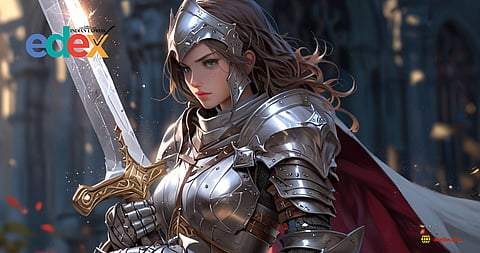

India's animation, visual effects, gaming and comics (AVGC) industry is expanding rapidly and emerging as a world leader in the production of digital content. But there is one big problem with this good news: the gap between what educational institutions teach and what companies need is getting bigger.
Compared to the AVGC industry that uses new technology such as RT, AI programs, AR/VR and cloud rendering workflows, institutions are very dependent on outdated teaching methods and theory. As a result, many animation graduates are not prepared for the fast-paced, hands-on work in animation and VFX companies.
Animation industry boom increases global employment
Animation is becoming very popular throughout the world. The large streaming services like Netflix and Disney+ are investing heavily in animated shows. With this expansion, we have a lot of scope for animators, storyboard artists and motion designers. Also, animation is transforming careers outside of entertainment, such as marketing, education, health care, building design and business training etc.
In everything from animated explanation videos to surgery training and 3D building tours, animation is creating new jobs in all kinds of industries. This dynamic and fast-growing industry has a promising future ahead.
India's animation industry has a severe skills shortage
The industry will grow to about $250 billion by 2025, according to the FICCI-EY report. Most courses offer little hands-on experience, so very few graduates are able to get right into a studio. Studios need people who can animate, rig, light, composite and solve problems.
New tools such as Unreal Engine, Unity and AI are transforming the work, but still the institutions do more theory than real production. India needs to bridge this gap in skills in order for new graduates to contribute immediately in fast, team-based studios. The report says the sector will hit $250 billion from 2025, but there are many courses and very few graduates to work in modern studios.
The major problem is a lack of skills. Students lack practical experience, good portfolios and teamwork skills that are required by these studios. Modern studios want professionals who are good at animation, rigging, lighting, compositing and problem-solving.
As the industry changes through the use of animation tools and AI, education is left behind and remains more theoretical. India needs to narrow this gap in order to meet the global standards and help graduate students to be productive right away in quick and collaborative studio settings.
A shift to skills: the way forward
In order to successfully bridge the existing gap, India's AVGC education framework will need to shift from a focus on credentials to a focus on skills. This means giving priority to hands-on training, working together with industry and colleges, and using flexible learning methods instead of regular degrees. The following are the skills or strategies that need to be focused on:
Collaboration between industry and academia: Strong partnerships with studios can bring professionals into the classroom as mentors, curriculum helpers, or guest speakers. Studio visits and live projects, which fit into the day-to-day work of production, keep training relevant.
Modular and flexible credentials: Micro-certificated courses, boot camps and short workshops on special subjects (like real-time engine animation or motion capture cleanup) can quickly improve students’ skills and keep up with new technology.
Emphasis on project-based learning and skill assessment instead of theoretical test: Courses should resemble real studio life: mixed teams, urgent deliverables, feedback like a client and repeating work on a project. Rather than testing on facts, students should be taught with practical tasks - such as animating a scene, putting together a shot or fixing a game level, etc.
Proficiency in AI tools: Students should learn industry-specific AI tools, such as AI-assisted animation, motion capture cleanup, rotoscoping automation and generative design software.
Valuable industry experience: Internships, studio partnerships and academia-Industry expert mentorship programs help connect academic learning with job expectations.
A global possibility- India should be prepared
The Indian graphic/ animation content is being consumed both locally and globally. Therefore, it is vital that the Indian education system produces graduates who are not just familiar with international work but are also capable of skills that match the global standards. It is no longer enough to be creative.
The Animation industry in India can only succeed when emerging talents are able to cope with the requirements of the global content market. Educational institutions must integrate practical knowledge with a sound theoretical base. With technology altering storytelling and creativity stepping into the new arena, education should no longer be bound by the traditional barriers to meet the urgent demands of the animation industry.
The potential of future animation will be unlocked with the help of a skills-based curriculum that employs real-life tools, collaborative assignments, skill drill tests and the latest technologies, including AI and virtual reality. This effort goes beyond closing a gap; it builds a dynamic ecosystem where learning and industry evolve together.
[Article by Satya Sidhartha Panda, Associate Dean-Academics, Medhavi Skills University. Views expressed are their own]
